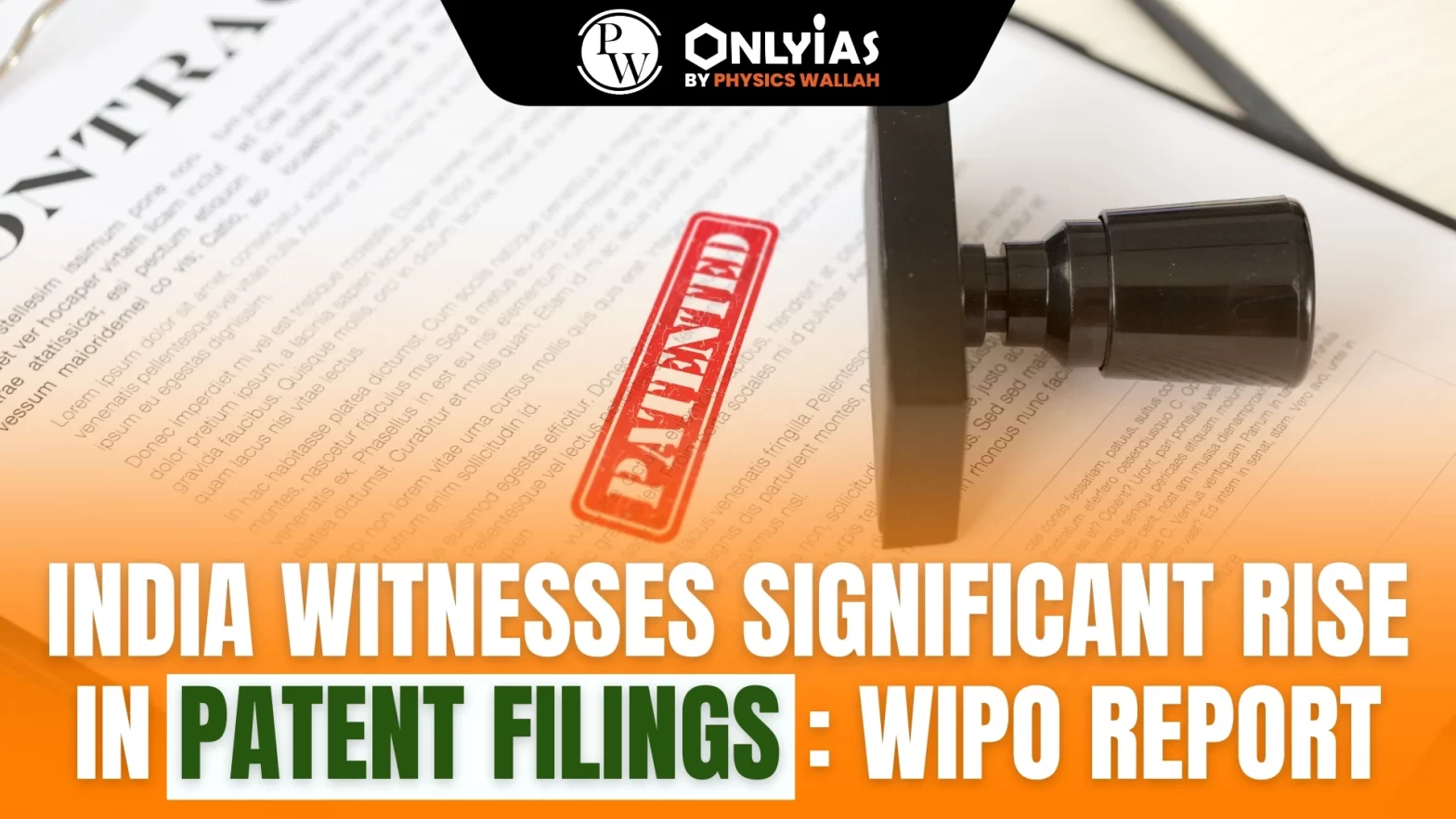Context: This article is based on an Editorial “India must learn from China’s patent chase and focus on quality over quantity” Which was published in the Live Mint. In 2022, global patent filing reached new heights, driven by innovators from India and China propelled by high levels of innovation, entrepreneurship, and digitalization.
| Relevancy for Prelims: National Intellectual Property Rights Policy.
Relevancy for Mains: Patent Filing, its associated Challenges in India and a Way Forward. |
What is the status of Indian patent filings according to the WIPI report?
What are the reasons behind the high levels of patent filing in India?
- Government Support: The government provides various forms of support viz. patent awareness programs, patent fee discounts, etc. to encourage and facilitate patent filing in the country.
- Efficient Reporting on Patents: India’s move towards IP-driven development will assume more importance in the run-up to 2047 as the country has started releasing the First Examination Reports (FERs) of patents in only 4.8 months (6 months in developed countries).
- India’s Adoption of Emerging Technologies: From the patents filed between FY2010 and FY2022, a substantial 2,66,000 belong to the technology domain and within this patent category, around 160,000 pertain to cutting-edge areas like AI, Internet of Things (IoT), Big Data, Cybersecurity, and Blockchain.
- Startup Culture: Startups, often focused on innovation and disruptive technologies, actively seek to protect their intellectual property through patents.
- Further, startups are being provided an 80% fee rebate and fast-tracked examination on filing patent applications and a 50% fee rebate in filing trademark applications.
What challenges are associated with patent filing in India?
- Patent Paradox: This term was given by Gideon Parchomovosky, which denotes the over-valuing of patent protection by patentees despite the low value of their patents.
- Lack of Efficiency in Granting Patents: India lacks the ability to grant patents efficiently. For instance, in 2022-23, India recorded 82,805 patent applications with only 34,153 grants.
- Decline in Venture Capital (VC) Funding: Persistent uncertainty remains a burden on the worldwide innovation ecosystem, leading to a decline in VC funding across various regions.
- IP Protection and Enforcement: As per the U.S. Trade Representative (USTR) 2022, India is one of the major economies presenting substantial IP protection and enforcement challenges.
- Gender Disparity: As of 2023, women globally account for 16.2% of all inventors, with men making up the remaining 83.8%.
What is the National IPR Policy 2016?
- Aim: It encompasses all IPRs into a single vision document, setting in place an institutional mechanism for implementation, monitoring, and review of IP laws.
- Types of IPR covered under the Intellectual Property Rights Policy Management (IPRPM) Framework: (i) Patents, (ii) Trade mark, (iii) Industrial Designs, (iv)Copyrights, (v) Geographical Indications, (vi) Semiconductor Integrated Circuit Layout Design, (vii) Trade Secret, and (viii) Plant Varieties.
What activities has the government undertaken under the National IPR Policy?
- Modernisation & Digitisation of IP offices for improvement in functioning and performance.
- Reducing filing fees for Start-ups, MSMEs, and educational Institutes to encourage Patent filing.
- Expedited Examination for certain categories of applicants, such as women inventors.
- Patent Facilitation Programme has been revamped to boost more inventions.
- National Intellectual Property (IP) Awards are conferred every year to recognize and reward the top achievers for their IP creations and commercialization.
Way Forward:
- Need to learn lessons from the Chinese Patent Approach: The government needs to resolve the issue of the ‘patent paradox’ (understaffing and underfunded) and the focus must be on qualitative innovation.
- Analysis of Patent Quality: India should carry out a post-facto analysis of patent quality, possibly under the aegis of the Office of Principal Scientific Adviser.
- Saying No to Incentive Structure: Ensure that India does not put an incentive structure in place, especially for educational institutions, that attracts low-quality patents.
- Collaboration for Awareness: To further boost domestic patent filings, partnerships among various stakeholders would be crucial in creating and raising awareness.
Conclusion
In the wake of a significant 31.6% surge in Indian patent filings, propelled by government support, emerging technologies, and a thriving startup culture, addressing challenges such as the ‘patent paradox,’ efficiency in granting patents, and international IP protection concerns becomes imperative for India to ensure sustainable and qualitative innovation in the global landscape.
| Prelims Question (2019)
Consider the following statements:
1. According to the Indian Patents Act, a biological process to create a seed can be patented in India.
2. In India, there is no Intellectual Property Appellate Board.
3. Plant varieties are not eligible for the patented in India.
Which of the statements given above is/are correct?
(a) 1 and 3 only
(b) 2 and 3 only
(c) 3 only
(d) 1, 2 and 3
Ans: (c)
|
| Mains Question (2014): In a globalized world, Intellectual Property Rights assume significance and are a source of litigation. Broadly distinguish between the terms—Copyrights, Patents and Trade Secrets. |
![]() 30 Nov 2023
30 Nov 2023

